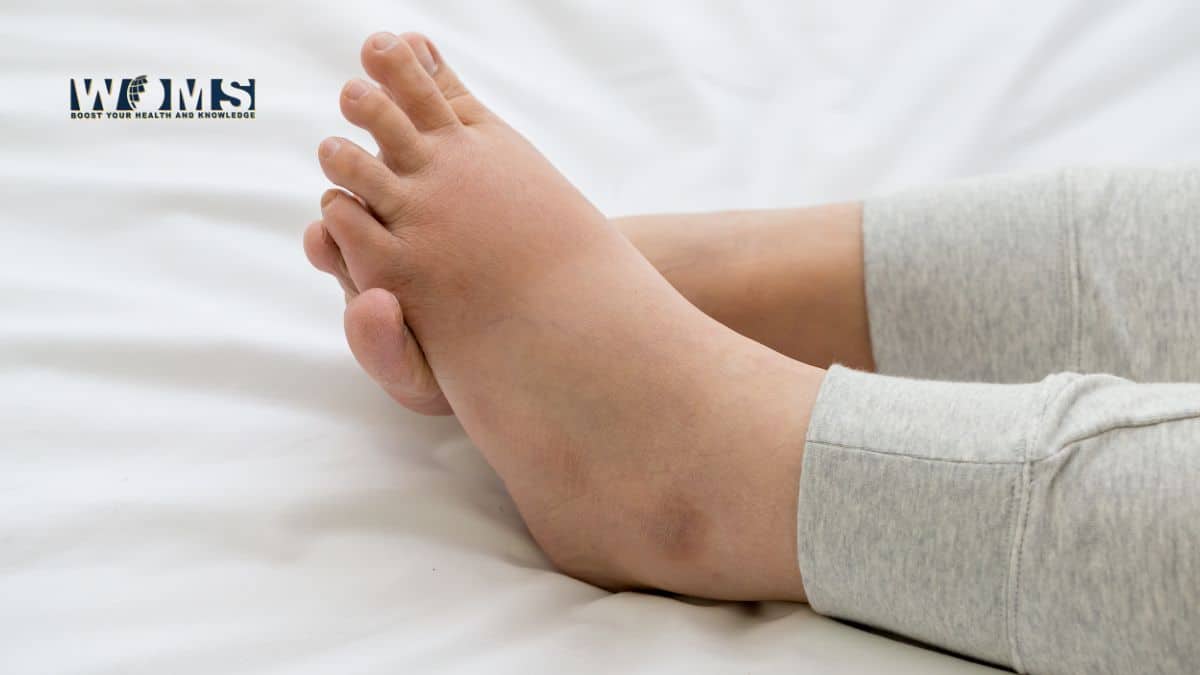
Leg swelling, medically referred to as peripheral edema, can be a benign symptom of a long day spent on your feet or an indicator of a more serious underlying health condition. Swelling in the legs and ankles is caused by an accumulation of fluid in these tissues, a problem often linked to the circulatory system, the lymphatic system, or the kidneys. As common as it might be, understanding the specific causes, recognizing the symptoms, and knowing when to seek professional medical advice are essential in managing this condition effectively.
What Causes Leg Swelling?
There may be many causes of swollen legs, varying from benign to threatening. Among the recognized causes is the presence of venous insufficiency, with the veins failing to pump blood properly so that it can be returned to the heart. Therefore, it may give rise to the accumulation of these blood cells in the legs, resulting in swelling. Another explaining factor could be heart failure, when the heart isn’t contracting correctly enough to pump blood around the body.
A person can end up with kidney and liver disease, which can cause swelling of the legs. This is because these diseases can affect the elimination of extra bodily fluids. Additionally, in these situations, the veins are often under increased pressure, which can cause difficulties with blood flow and ultimately increase swelling.
Another medication’s side effects that can produce leg swelling are non-inflammatory steroids and NSAIDs (Non-Steroidal Anti-Inflammatory Drugs). Some people take medication for blood pressure, and calcium channel blockers are among the standard drugs. Considering the circumstances (such as prolonged standing or sitting) also plays a significant role in making the situation worse.
Symptoms of Leg Swelling
The most common symptom of leg swelling is a strange accumulation of fluids in the underlying tissues, often in the lower extremities. Nevertheless, the symptoms may vary for different reasons. These may include skin that is stretched or shinier than the skin that is usually around, a retained dimple after it was pressed on, increased warmth or redness on the leg, and discomfort or pain in the affected part of the body.
Persistent leg swelling due to lymphatic or venous insufficiency may worsen during a prolonged standing position and improve when the leg is placed on elevation and compression. Unlike leg swelling due to heart failure, it may manifest with other symptoms like shortness of breath and fatigue and could be associated with water retention that causes weight gain. One of the critical aspects of establishing the reason for the swell is pinpointing the accompanying symptoms. This information can act as a clue in making such an identification.
When to Seek Help
It’s also important to always determine whether or not that leg swelling is at the level that a doctor should see you about. In such cases, the situation demands quick medical help if there is sudden, severe swelling, if pain accompanies it, case you experience additional symptoms (Like it’s hard to breathe or you feel cramps in your chest), as it can be the symptom of deep vein thrombosis or heart failure. For one leg swelling that’s more pronounced than the other, this is another possible sign of DVT – deep vein thrombosis, which is a blood clot in the deep vein of your legs.
On the other hand, leg edema and diabetes or high blood pressure would call for a consultation from your health care practitioner. If you are pregnant, though, make sure you see your doctor. In addition, the risk of circulatory dysfunction or venous stasis ulcers might be perceived as complications of venous congestion and chronic extremity swellings.
Managing and Treating Leg Swelling
The management of leg swelling is one of the underlying causes. If drugs are the subject, the doctor may tweak the dosage, or you may be given a new drug to their existing regimen to reduce the symptoms. Compression stockings or socks become indispensable for venous sufficiency, helping the expansion of blood and fluids through their downward flow. In addition, a few lifestyle behavior modifications, such as lowering the salt intake, taking part in regular exercises, and raising the legs when resting, can help manage symptoms, too.
Medication cannot bear all the loads, so in case of persistent or severe illness, e.g., caused by heart or kidney disease, the patient may have to proceed with more comprehensive medical treatments. One way could be to distribute diuretics to reduce fluid retention, have surgery to fix damaged veins, or use a technique to remove blockages in the blood system.
Conclusion
Leg swelling is a reasonably frequent symptom that can come up when nothing is happening, but you cannot miss it. Through this awareness, you can know when it is the right time to seek a doctor’s advice and the best way to handle it. When those problems occur with leg swelling, don’t forget to apply early interventions to avoid the complications and keep the quality of your life. For the utmost treatment and professional advice, the patient can visit vascular centers as they house professionals who specialize in managing health issues related to the veins. Their services are irreplaceable in addressing your symptoms and moving you on the path to returning to your previous lifestyle.




